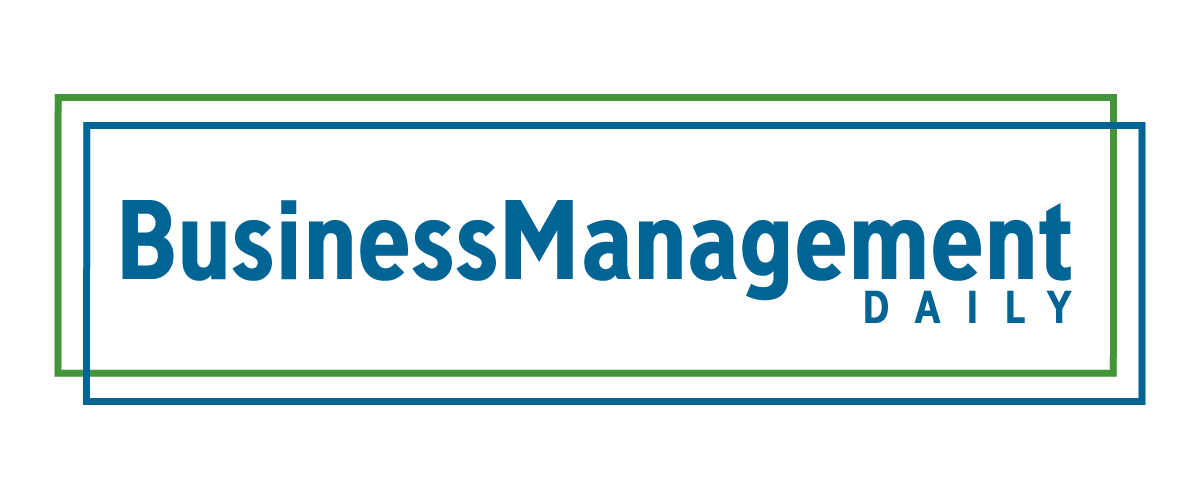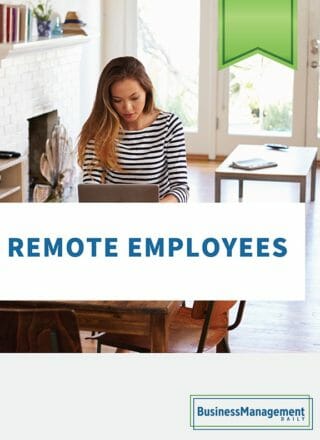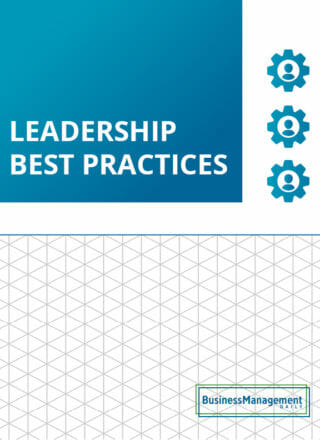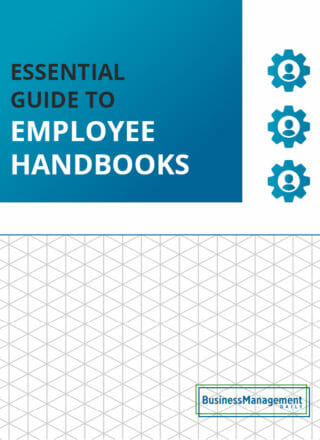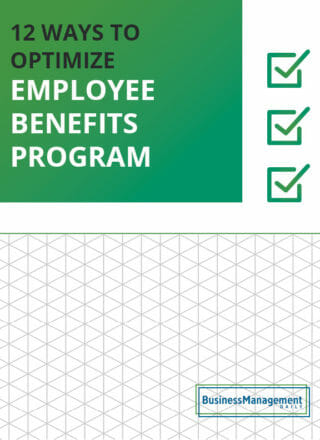AI recruitment: Benefits, drawbacks and best practices
Can AI solve your hiring challenges?
AI use in hiring is on the rise. The 2024-2025 Criteria Hiring Benchmarking Report noted that about a quarter of companies are now using AI for hiring or talent management, a notable increase from the 12% that reported recruitment AI usage in the 2023 report.
AI can significantly streamline the hiring process by automating common workflows like writing job postings, scheduling interviews, and candidate sourcing.
Recruiting efficiently has been a significant challenge for companies, including small businesses and large corporations. In the current market, we’re seeing large companies, such as Southwest Airlines and Chevron, lay off significant percentages of their staff.
Federal agencies are also laying off staff. Therefore, employers may be seeing a stark increase in applications. They receive these applications when posting a job.
Can AI help you sort through all these job applications and streamline candidate communications? You can do it with the right tools if you can use them effectively.
What is AI recruitment?
AI recruitment uses artificial intelligence (AI) to streamline and automate recruitment. It can support various aspects of the hiring process. For example, it can help you build the initial job description. Furthermore, it can help you identify which candidates best match your needs.
AI recruiting tools can quickly analyze vast amounts of data. Additionally, they can identify patterns. Moreover, they can make predictions. Consequently, these tools help you save time. Finally, they help you make better hiring decisions.
One thing to remember is that AI recruiting isn’t a substitute for human recruiters. Instead, it is intended to complement their work and help them operate more efficiently.
When you post a job online, you may find hundreds of applications to sort through and dozens of qualified candidates that appear worth interviewing. AI recruitment can reduce the time it takes to scan through resumes and conduct preliminary basic screenings.
How AI technology can support the recruitment process
AI can help with recruitment in several different ways. Here are the primary ways that employers are leveraging AI technology to simplify hiring:
- Natural language processing (NLP): NLP analyzes human language patterns to evaluate and match job descriptions and candidate materials, helping you identify which candidates best match your hiring needs. Using NLP, AI tools can identify key qualifications, assess behavioral traits, and flag potential concerns in applications.
- Automated sourcing: AI recruitment solutions can scan online platforms, including job boards, social media sites like LinkedIn, and professional communities, to identify qualified candidates matching your criteria. This can help you target passive job seekers who may not be actively applying and those already engaged in job hunting.
- Video interview analysis: Some employers are using AI to conduct candidate screenings through video analysis or to analyze recruiter-conducted video interviews. AI can evaluate conversation dynamics, including participant speaking ratios and emotional indicators, to extract insights about the candidate and their communication skills. Of course, letting candidates know if you’ll be recording them for video analysis is essential.
- Onboarding automation: After you’ve found the right candidate, you can use AI automations to get them onboarded promptly. AI can simplify onboarding by automating routine tasks such as paperwork and coordinating training schedules. It can also personalize the experience by matching new hires’ skills, learning styles, and career goals to the most relevant training and development resources.
Benefits of AI in recruitment
AI offers numerous benefits in recruitment, transforming how companies find and hire talent:
Increased hiring speed
When you have an open role, you want to fill it quickly. Each job opening represents an unfilled need within your team and often much important work that isn’t getting done while you search for a new hire.
AI can speed up the process and help you fill roles faster by automating time-consuming tasks like resume screening and interview scheduling.
This enables you to move candidates through the recruitment stages more efficiently, providing a better candidate experience and freeing recruiters to focus on more strategic and interpersonal tasks.
Improved diversity and inclusion
Humans all inherently have unconscious biases, which can unintentionally impact the candidate selection process. In contrast, AI focuses on objective criteria and skills to help eliminate unconscious bias in hiring decisions, leading to a more diverse and inclusive workforce.
Enhanced candidate experience
When used correctly, AI can significantly enhance the candidate experience. AI tools can personalize the candidate journey, respond quickly to questions that arise during the application process, and offer tailored job recommendations.
One of the most significant benefits for candidates is not the AI interaction itself but the increased speed at which the recruitment process moves. A slow recruitment process can dampen the candidate experience.
Still, when recruiters use AI screening tools to streamline the initial review, they can get back to candidates soon after they apply instead of keeping them waiting.
Candidate ghosting is also a common complaint that AI can address from job seekers. Set up an automated email to candidates when they haven’t been selected or a job is filled. This is a great way to build a positive employer brand and encourage candidates to reapply later when a stronger-fit job arises.
Better quality of hire
Making the wrong hire can be expensive. However, AI-powered recruiting tools can help you find higher-quality candidates. These candidates will better match your needs. Specifically, AI can carefully analyze a wealth of data. This data includes the candidates’ resumes. It also includes their cover letters.
Furthermore, it includes assessment results. Additionally, it includes application responses. Consequently, this analysis helps you find the best match. Moreover, it enables you to gain insights. These insights may be overlooked in a standard candidate screening.
Finally, many AI tools also incorporate predictive analytics. These analytics can help forecast a candidate’s potential performance and likelihood of success in a role.
Cost Reduction
AI can reduce hiring costs by automating tasks and improving efficiency. Furthermore, productivity loss, which comes from unfilled positions, is costly. Consequently, the streamlined AI recruitment process can cut that cost down.
In addition, AI recruitment tools can be particularly beneficial for small businesses. These businesses don’t have the budget for a large recruiting team, so they are looking for a more cost-effective solution. Specifically, they want to help their small hiring team work more efficiently.
Drawbacks of AI in recruitment
While AI can offer significant advantages throughout the recruitment process, it’s important to acknowledge and address the potential challenges.
Creating an impersonal hiring process
You never want to take the human out of human resources, especially in recruiting and hiring. Balancing the use of AI with human interaction is essential.
AI can streamline and automate many tedious administrative tasks, freeing up your recruiting team’s time for more hands-on tasks. Still, it should not be used to replace the more interpersonal aspects of recruitment.
Remember that candidates value human connection and personalized communication. They also actively evaluate your company and culture, just as you evaluate their skills and potential fit.
If most of their interactions with your company are through AI, they can’t get a good feel for your organization’s culture and the team they’d be working with.
Potential for bias or discrimination
AI recruitment can minimize the impact of human bias. However, it’s important to remember something. Humans still build these systems. Moreover, humans can absorb some of our biases. Consequently, AI systems learn from data.
This data comes from thousands of different human-produced documents and various human-produced sources, which can lead to biases in AI algorithms.
For example, in 2018, Amazon had to scrap an AI recruiting tool that was found to discriminate against female applicants. It was downgrading resumes that included the word “women’s” or were from all-women’s colleges due to a gender bias in the data it was trained on.
There is a lot of current talk about “getting rid of DEI.” Even so, employment discrimination is still illegal. Furthermore, biased hiring can hurt your company’s reputation. It can also damage your company’s culture. The goal of recruitment is to find the right candidate for you.
This is true whether recruitment is AI-assisted or not. Therefore, you don’t want to filter top talent out. This is especially true because of a technical issue. This issue could be in your AI screening system.
Data privacy and transparency concerns
Employers need to be transparent with candidates about how AI is used in recruitment, mainly how their data is used. Protecting candidate data and complying with privacy regulations like GDPR is also crucial when using AI in recruitment.
Companies must ensure something. They must ensure that AI tools are used in a certain way. Specifically, they must be used in a way that respects candidate privacy. Moreover, they must be used in a way that complies with all relevant laws. Additionally, they must comply with industry standards.
Therefore, it’s best to opt for purpose-built recruiting tools and employee management tools. This is better than inputting candidate data into broader programs, such as Chat-GPT.
Over-reliance on AI
AI has many great uses, but you shouldn’t over-rely on it to get things done. It should help humans, not replace them. This is especially important when it comes to decision-making.
AI can make excellent recommendations. However, you still want your recruiters to use their judgment. You also want your hiring managers to use their judgment.
This is especially important when advancing candidates to the next round. Finally, it is crucial when ultimately making a hire.
Some things can’t be fully measured through data and AI analysis, including cultural fit and soft skills. A person may look best on paper, but this person may not mesh best with your team.
They may also not bring the best attitude to their work. Therefore, the added human touch and human judgment are imperative.
Environmental impact
While corporate sustainability measures may not be as trendy as they were a few years ago, it’s still worth considering how your company’s actions impact our planet. AI, particularly generative AI tools, does have a significant environmental impact.
AI results in large amounts of energy usage and heightened carbon emissions. This global problem will worsen as AI usage grows unless more sustainable technology options become available.
Types of AI recruitment tools
There are tons of AI recruiting software programs and tools on the market. They all serve slightly different functions, some focusing on sourcing while others concentrate on candidate engagement and outreach. Here are some of the top software types and vendors to explore if you want to dip your toes into AI recruitment.
- AI Job Description Tools: AI tools like GoHire, Textio, and Workable can help you write compelling job descriptions that attract top talent to your opening.
- AI Sourcing Tools: AI-assisted sourcing tools such as Arya, hireEZ, and Fetcher use machine learning to analyze online profiles and identify potential candidates from job boards, social media, and other professional networks.
- AI Interviewing Tools: These tools assist with interview scheduling, conducting automated video interviews, and analyzing candidate responses using natural language processing and machine learning. Examples of these tools include HireVue, MyInterview, Talocity, and Tengai.
- AI Chatbots: AI chatbots automate communication with candidates. They can be programmed to answer common questions, provide support throughout the hiring process, and help screen candidates. Some popular options include Paradox, XOR, and Humanly.io.
- AI integrations for ATS and CRM software: AI is now integrated into many of the top Applicant Tracking Systems (ATS) and Customer Relationship Management (CRM) systems, like Greenhouse and Zoho Recruit. These integrations are designed to improve efficiency and automate tasks like candidate matching, resume parsing, and interview scheduling.
How companies are using AI in recruitment
Several companies have successfully implemented AI in their recruitment processes, and many have seen positive results. Here’s how some of the top companies are integrating AI into their recruiting practices:
- Unilever: A major consumer goods company, Unilever uses AI in its candidate screening process through skills assessments and video analysis. The company uses an AI model to analyze candidates’ body language, word choices, and more during video interviews. It compares them against traits that predict job success in various roles.
- KLM Royal Dutch Airlines: KLM uses an AI chatbot, BB or BlueBot, to answer questions and guide applicants through recruitment. The chatbot is designed to provide a personalized, supportive journey, like the company’s public-facing chatbot that helps customers book flights.
- Accenture: Accenture uses AI for high-volume candidate sourcing and screening. The company’s privacy statement on its career site is an excellent example of an employer explaining how candidate data will be collected and what processes AI may be involved in. They also have an FAQ about their AI screening tool and its role in the hiring process available for candidates. This is a tremendously transparent approach when using AI for hiring.
- PepsiCo: You’re probably familiar with Pepsi, but you may not know that the company uses AI phone and video interviews to screen applicants for many of its roles. The company owns dozens of food and beverage brands and has positions nationwide, so it’s not surprising that it needs help screening all those applicants.
- Sephora: Sephora is another company using AI-powered chatbots to engage candidates and streamline the application process. Sephora’s chatbots can answer questions and recommend jobs based on candidate preferences. Furthermore, they provide support throughout the application process, which leads to higher application completion rates and a smoother candidate experience.
Each company approached AI recruitment differently, aiming to solve its unique challenges. If you want to integrate AI into your recruitment process, consider your biggest recruiting problems or where your team could help streamline the process.
The future of AI in recruitment
AI recruitment is still a developing field. New technology is being developed, and current tools are continually refined to offer a better experience for candidates and hiring teams.
Many of today’s AI tools feel robotic and impersonal. Nevertheless, companies are working to provide better AI systems. These systems will better replicate human speech patterns and writing patterns.
Consequently, these systems will offer candidates a higher degree of personalization. Furthermore, there is a push for more environmentally friendly AI. This push is excellent news. This is especially true if your company strives to be more sustainable.
One of the biggest trends to watch in the near future is how AI recruitment impacts recruitment timelines. AI tools may shorten initial candidate screening time and streamline communications, such as interview scheduling.
Therefore, we may see a more widespread reduction in time-to-fill metrics and time-to-hire metrics. This would be excellent for both employers and job seekers.
If your company is adopting AI recruitment, monitor developments in the technology available and any regulations that may be implemented.
As with any new technology, it can take time for laws and compliance standards to catch up. However, business leaders and HR professionals need to track any future updates to data privacy and AI usage guidelines.
More resources:
AI job descriptions: How to write them faster and avoid bias ![]()
Reskilling: Prepare your workforce for the future of work ![]()
Understanding the AI impact on employee workplace expectations ![]()
Want more insights like these? Visit Kaylyn McKenna’s author page to explore her other articles and expertise in business management.
